Find Neighbor Polygons in a Layer¶
Opomba
If you are using QGIS3, there is a simpler and better way to do this analysis using the aggregate function. See my post Find Neighbor Polygons using Summary Aggregate Function in QGIS
There are some use cases where you want to find all neighboring polygons of each of the polygons in a layer. With a little python script, we can accomplish this and much more in QGIS. Here is an example script you can use to find all polygons that share boundary with each of the polygons in a layer and also add their names to the attribute table. As an added bonus, the script also sums up an attribute of your choice from all the neighboring polygons.
Overview of the task¶
To demonstrate how the script works, we will use a layer of country polygons and find countries that share the border. We also want to compute the total population of the country’s neighbors.
Get the data¶
We will use the Admin 0 - Countries dataset from Natural Earth.
Download the Admin 0 - countries shapefile..
Data Source [NATURALEARTH]
Get the script¶
Download the neighbors.py script
and save it to your disk.
Procedure¶
Load the
ne_10m_admin_0_countrieslayer by going to .
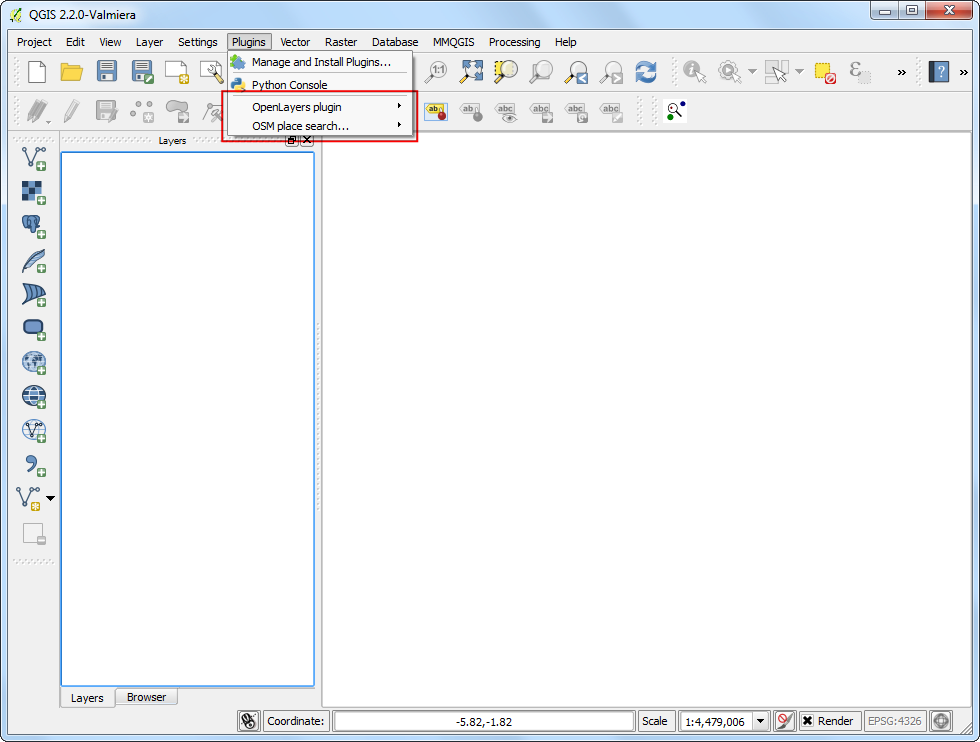
The script uses 2 fields to perform the action. A name field and a field that you want to sum up. Use the Identify tool to click on any feature and examine the attributes. In this case the name field is NAME and we want to sum up the population estimates from POP_EST field.
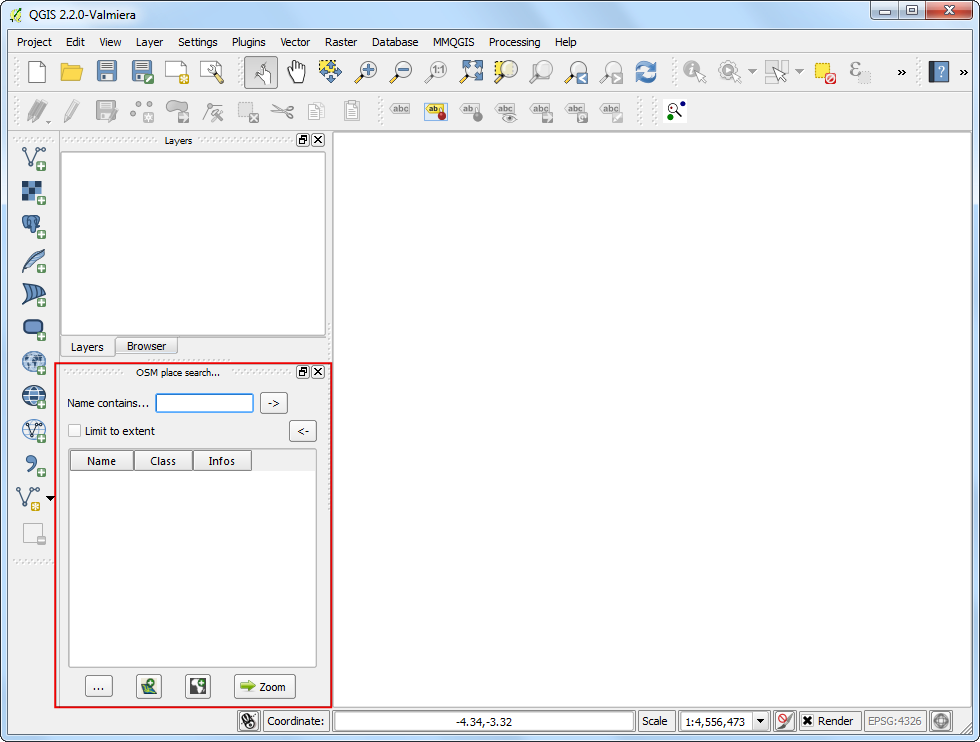
Go to .

In the Python Console window, click the Show Editor button.

In the Editor panel, click the Open file button and browse to downloaded
neighbors.pyscript and click Open.
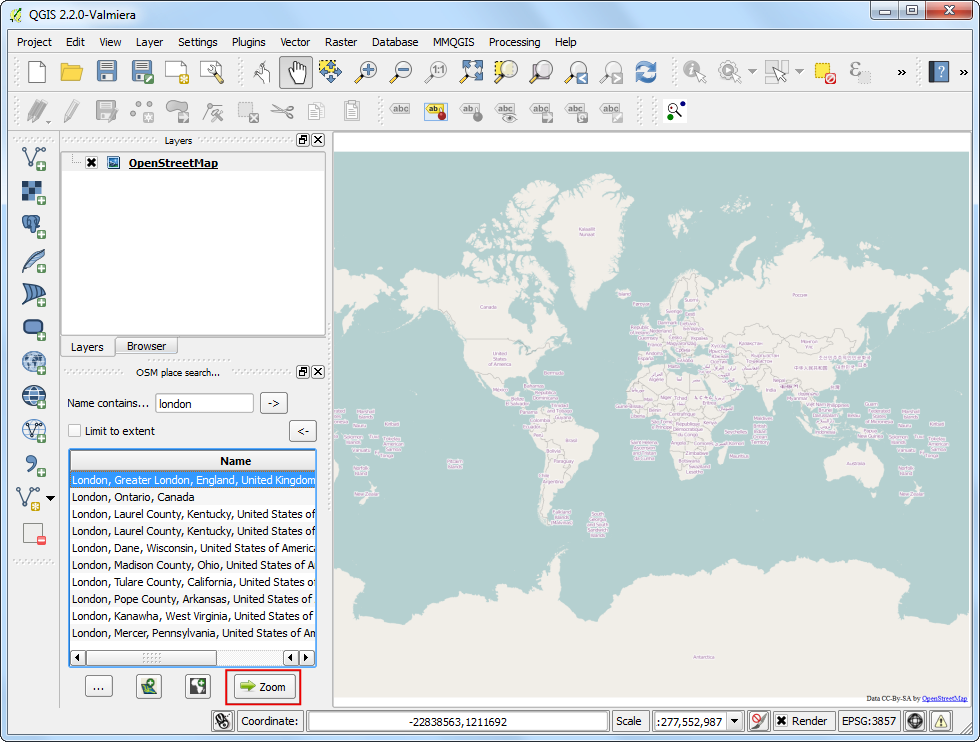
Once the script is loaded, you may want to change the
_NAME_FIELDand_SUM_FIELDvalues to match the attributes from your own layer. If you are working with thene_10m_admin_0_countrieslayer, you can leave those as they are. Click the Save button in the Editor panel if you made any changes. Now click the Run script button to execute the script.
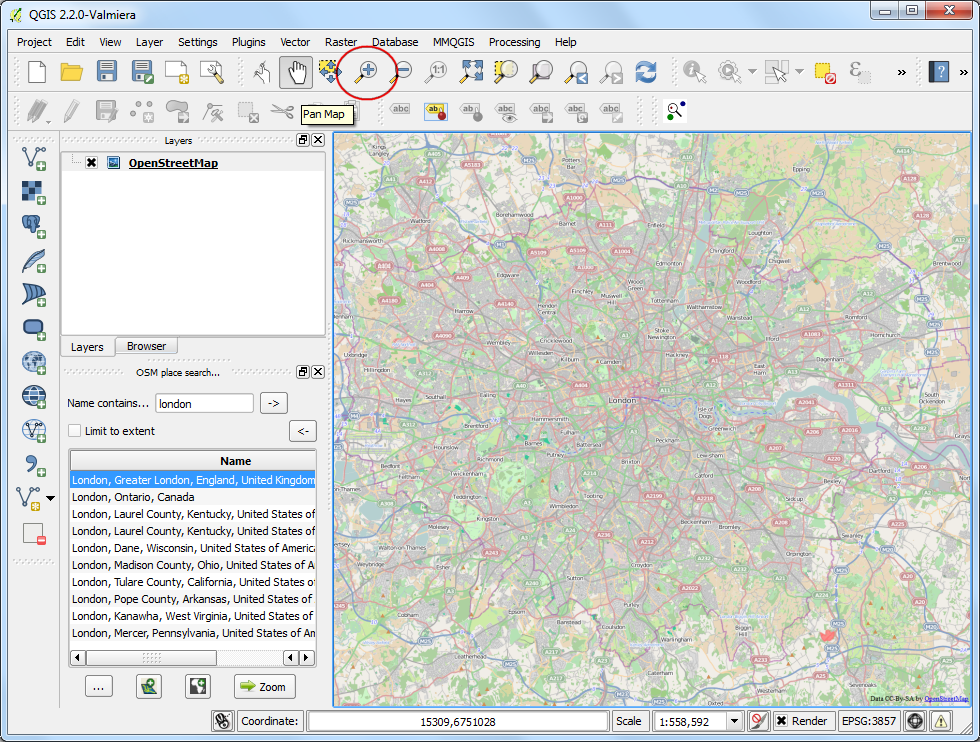
Once the script finishes, right-click the
ne_10m_admin_0_countrieslayer and select Open Attribute Table.

You will notice 2 new attributes called
NEIGHBORSandSUM. These were added by the script.
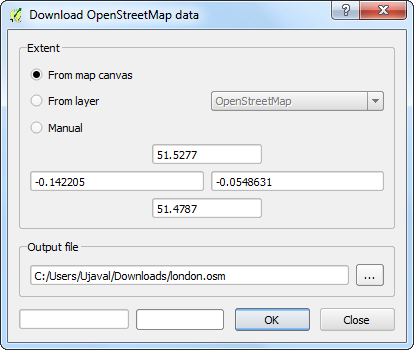
Below is the complete script for reference. You may modify it to suit your needs.
################################################################################
# Copyright 2014 Ujaval Gandhi
#
#This program is free software; you can redistribute it and/or
#modify it under the terms of the GNU General Public License
#as published by the Free Software Foundation; either version 2
#of the License, or (at your option) any later version.
#
#This program is distributed in the hope that it will be useful,
#but WITHOUT ANY WARRANTY; without even the implied warranty of
#MERCHANTABILITY or FITNESS FOR A PARTICULAR PURPOSE. See the
#GNU General Public License for more details.
#
#You should have received a copy of the GNU General Public License
#along with this program; if not, write to the Free Software
#Foundation, Inc., 51 Franklin Street, Fifth Floor, Boston, MA 02110-1301, USA.
#
################################################################################
from qgis.utils import iface
from PyQt4.QtCore import QVariant
# Replace the values below with values from your layer.
# For example, if your identifier field is called 'XYZ', then change the line
# below to _NAME_FIELD = 'XYZ'
_NAME_FIELD = 'NAME'
# Replace the value below with the field name that you want to sum up.
# For example, if the # field that you want to sum up is called 'VALUES', then
# change the line below to _SUM_FIELD = 'VALUES'
_SUM_FIELD = 'POP_EST'
# Names of the new fields to be added to the layer
_NEW_NEIGHBORS_FIELD = 'NEIGHBORS'
_NEW_SUM_FIELD = 'SUM'
layer = iface.activeLayer()
# Create 2 new fields in the layer that will hold the list of neighbors and sum
# of the chosen field.
layer.startEditing()
layer.dataProvider().addAttributes(
[QgsField(_NEW_NEIGHBORS_FIELD, QVariant.String),
QgsField(_NEW_SUM_FIELD, QVariant.Int)])
layer.updateFields()
# Create a dictionary of all features
feature_dict = {f.id(): f for f in layer.getFeatures()}
# Build a spatial index
index = QgsSpatialIndex()
for f in feature_dict.values():
index.insertFeature(f)
# Loop through all features and find features that touch each feature
for f in feature_dict.values():
print 'Working on %s' % f[_NAME_FIELD]
geom = f.geometry()
# Find all features that intersect the bounding box of the current feature.
# We use spatial index to find the features intersecting the bounding box
# of the current feature. This will narrow down the features that we need
# to check neighboring features.
intersecting_ids = index.intersects(geom.boundingBox())
# Initalize neighbors list and sum
neighbors = []
neighbors_sum = 0
for intersecting_id in intersecting_ids:
# Look up the feature from the dictionary
intersecting_f = feature_dict[intersecting_id]
# For our purpose we consider a feature as 'neighbor' if it touches or
# intersects a feature. We use the 'disjoint' predicate to satisfy
# these conditions. So if a feature is not disjoint, it is a neighbor.
if (f != intersecting_f and
not intersecting_f.geometry().disjoint(geom)):
neighbors.append(intersecting_f[_NAME_FIELD])
neighbors_sum += intersecting_f[_SUM_FIELD]
f[_NEW_NEIGHBORS_FIELD] = ','.join(neighbors)
f[_NEW_SUM_FIELD] = neighbors_sum
# Update the layer with new attribute values.
layer.updateFeature(f)
layer.commitChanges()
print 'Processing complete.'
If you want to give feedback or share your experience with this tutorial, please comment below. (requires GitHub account)